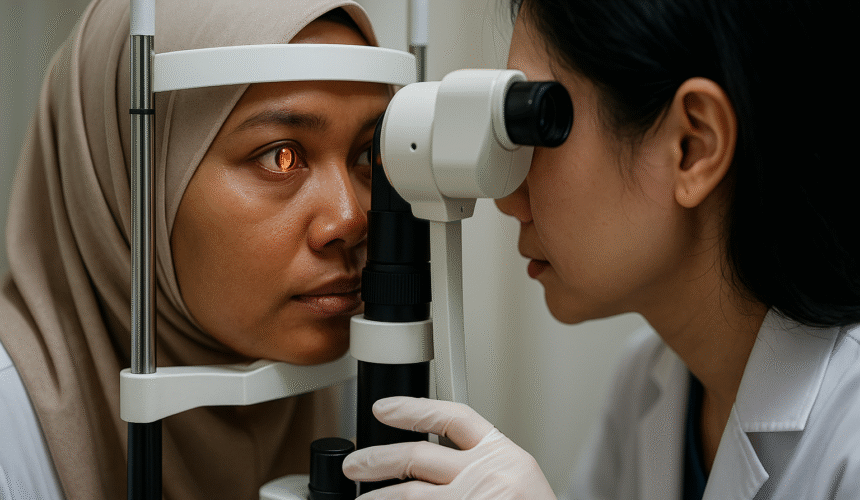Why floaters and flashes happen Seeing “snowflakes” or lightning streaks in your vision out of the blue? Don’t ignore it—your retina could be in trouble. Floaters look like dots, cobwebs or threads drifting across your vision. Flashes look like brief lightning streaks, often at the side of the eye. With age, the gel in the eye (vitreous) shrinks and can tug on the retina—this is common, but a sudden shower of new floaters and/or flashes can signal a retinal tear or detachment and needs urgent assessment. American Academy of Ophthalmology Red-flag symptoms — seek same-day care Please get your eyes checked immediately (today) if...

Eye Swelling During Pregnancy : What’s Normal & When to Worry
Hook: Pregnant and noticing puffy eyelids—especially in the morning or after a long day? 🤰👀 You’re not alone. Most eye swelling in pregnancy is harmless, but a few red flags deserve quick attention. What causes eye swelling in pregnancy? During pregnancy, your body holds more fluid and your hormones (oestrogen & progesterone) relax blood vessels. This can lead to: These changes are common in the 2nd–3rd trimester and usually settle after delivery. When is it not normal? (Please seek medical care) Contact your doctor urgently or go to Emergency if you have: If you’re unsure, get checked—better to be safe for you and baby. Simple,...

How to Detect Cataracts Early: A Guide to Clearer Vision
By Dr. Katherine Seng – Ophthalmologist, www.eyekath.com Cataracts are one of the most common causes of vision loss worldwide, especially as we get older. The good news? They’re treatable, and if detected early, your vision can be restored quickly and effectively. But many patients aren’t aware of the early signs until their daily activities — driving, reading, recognising faces — start becoming difficult. In this article, I’ll share how you can spot the warning signs of cataracts, when to see an eye doctor, and why early detection matters. What Exactly is a Cataract? A cataract happens when the natural lens...

Galaxy Multifocal IOL Launch
This past Saturday evening, we had the privilege of attending the much-anticipated launch of the Galaxy Multifocal Intraocular Lens (IOL)—an event that brought together a dynamic gathering of ophthalmologists, eye surgeons, and vision care professionals from across the region. Hosted in a warm and engaging atmosphere, the evening was more than just a product launch—it was a celebration of innovation and collaboration in modern ophthalmology. The Galaxy IOL represents the latest evolution in lens technology, designed to provide patients with clearer, more seamless vision across near, intermediate, and far distances, reducing the need for spectacles after cataract surgery. Clinical Insights and...


